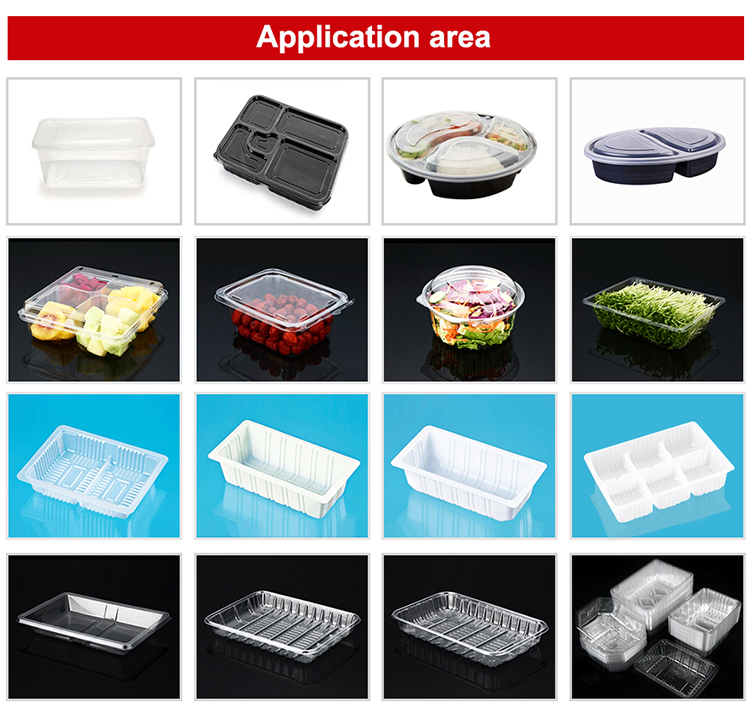Molding is the process of making various forms of polymers (powders, pellets, solutions or dispersions) into products in the desired shape. It is the most important in the entire process of plastic material molding and is the production of all polymer materials or profiles. The necessary process. Plastic molding methods include extrusion molding, injection molding, compression molding, transfer molding, laminate molding, blow molding, calender molding, foam molding, thermoforming and many other methods, all of which have their adaptability.
Thermoforming is a method of manufacturing products using thermoplastic sheets as raw materials, which can be attributed to the secondary molding of plastics. First, the sheet cut into a certain size and shape is placed on the frame of the mold, and heated to a high elastic state between Tg-Tf, the sheet is stretched while being heated, and then the pressure is applied to make it close to the mold The shape surface is similar to the shape surface, and the product can be obtained after cooling, shaping and trimming. During thermoforming, the applied pressure is mainly based on the pressure difference formed by vacuuming and introducing compressed air on both sides of the sheet, but also by means of mechanical pressure and hydraulic pressure.
The characteristic of thermoforming is that the forming pressure is low, and the thermoforming process is as follows:
board (sheet) material → clamping → heating → pressure → cooling → shaping → semi-finished products → cooling → trimming. The thermoforming of the finished product is different from the one-time processing technology such as injection molding and extrusion. It is not for plastic resin or pellets for heating molding or continuous molding with the same cross-section through a die; nor is it using machine tools, tools and other mechanical processing methods to cut part of the plastic material. Next, to obtain the required shape and size, but for the plastic board (sheet) material, heating, using mold, vacuum or pressure to deform the board (sheet) material. Reach the required shape and size, supplemented by supporting procedures, to realize the application purpose.
The thermoforming technology is developed based on the forming method of metal sheet. Although its development time is not long, but the processing speed is fast, the degree of automation is high, the mold is cheap and easy to replace, and the adaptability is strong. It can produce products as large as aircraft and car parts, as small as beverage cups. Leftovers are easy to recycle. It can process sheets as thin as 0.10mm thick. These sheets can be transparent or opaque, crystalline or amorphous. Patterns can be printed on the sheet first, or patterns with bright colors can be printed after molding.
In the past 30 to 40 years, due to the increasing variety of thermoplastic sheet (sheet) materials as raw materials, the continuous improvement of thermoforming process equipment, and the wider application of products, thermoforming technology has developed With relatively rapid development, its technology and equipment are becoming more and more perfect. Compared with injection molding, thermoforming has the advantages of high production efficiency, simple method, less equipment investment, and the ability to manufacture products with larger surfaces. However, the cost of thermoforming raw materials is high, and there are many post-processing procedures for products. With the continuous development of production technology and the need to maximize economic benefits, thermoforming equipment has gradually got rid of the former only as an independent plastic board (sheet) material molding system, and has begun to combine with other production equipment to meet the composition A complete production line for specific needs, thereby further improving production efficiency and reducing the production cost of the final product.
Thermoforming is particularly suitable for the manufacture of products with thin walls and large surface areas. Commonly used plastic varieties include polystyrene, plexiglass, polyvinyl chloride, abs, polyethylene, polypropylene, polyamide, polycarbonate and polyethylene terephthalate.
Post time: Apr-20-2021

